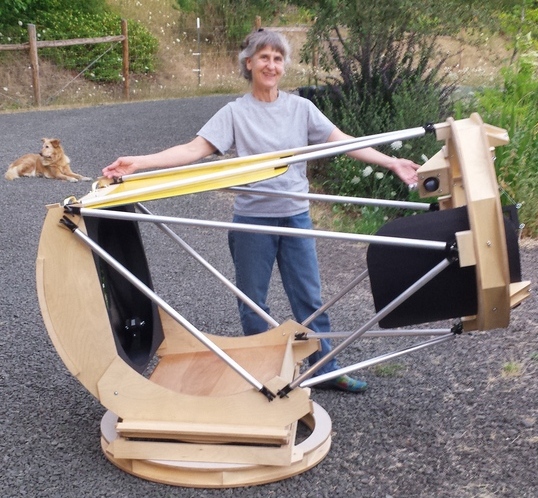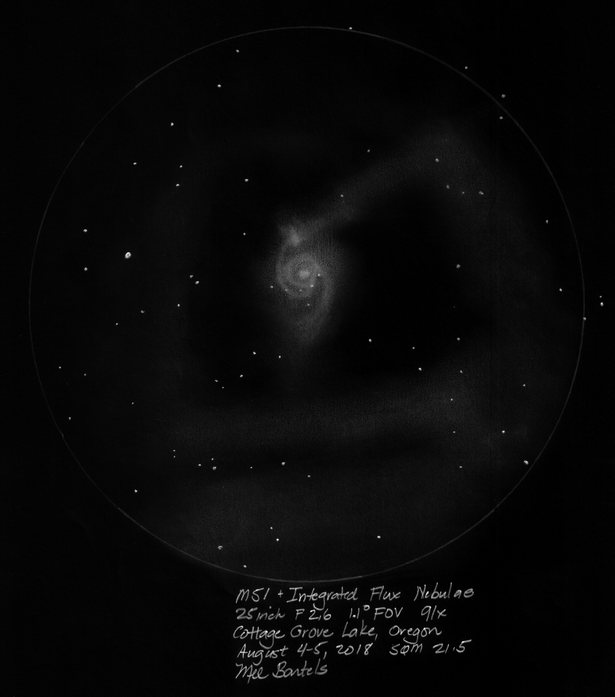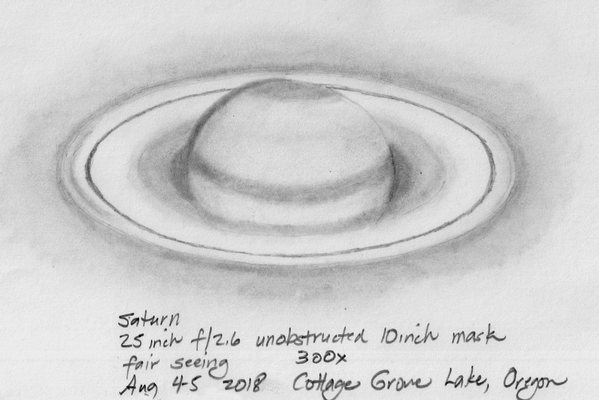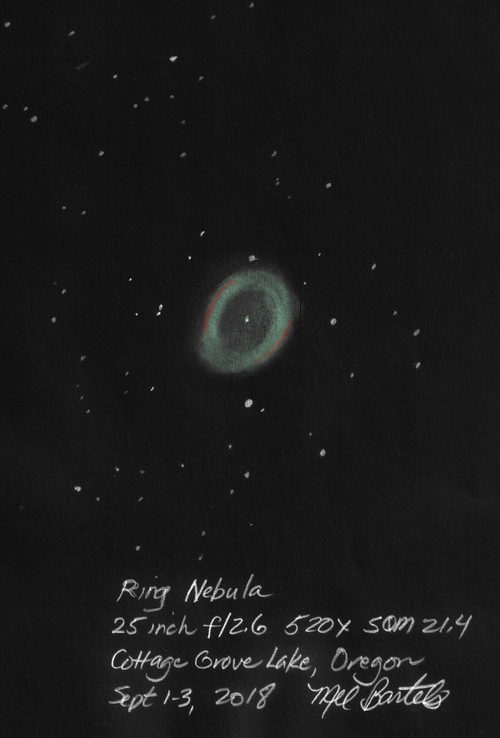





Too long – don’t want to read version: the scope is an astounding success!
The long version...
This scope is pushing boundaries: half inch thick meniscus mirror, f2.6 focal ratio – will all my effort pay off or be for naught?
Jupiter: As soon as Jupiter appeared to my unaided eyes, I aimed the scope at Jupiter. Terrible seeing – I’d forgotten how bad seeing affects large aperture scopes. I put on a 10 inch unobstructed mask as the seeing turns to fair. Nice! I watched the Red Spot, greatly shrunken over the decades and a huge disturbance in the adjoining belt transit the meridian. I’d often use an 8 inch unobstructed mask on my old 24 inch f5.5 that I used in the 1980’s when the seeing was poor. This view is better.
Saturn: oh, very nice indeed. The full aperture view and the unobstructed view were comparable though I could push the unobstructed view to 300x while the full aperture view was limited to 250x thanks to the seeing. There are so many stars in the field of view: the fainter stars and moons of Saturn are perfect tiny unresolved white specks. As with Jupiter, I sat in my observing chair. This is really comfortable and relaxing.
Experiment #1: try the unobstructed mask without the P2 coma corrector. Result is ugly coma though not as bad as full aperture without the coma corrector. With the coma corrector the star test is perfect.
M8 the Lagoon Nebula: just a hop away, the nebula looks huge and beautiful, stretching way beyond the field of view to the east. The 1.1 degree field is perfect for this object.
M20 the Triffid Nebula: stunning. I see a difference in hue between the two portions of the nebula. The orange star is intense. Like the view of the Lagoon, the star images are tight across the field. I was worried that the 21mm Ethos would be too much pupil and field for the f2.6. Sitting down while viewing deep sky objects through a big aperture scope is simply grand. It reminds me of Steve Swayze’s 18 inch f3.5 a few years ago at the Oregon Star Party. We sat to observe M33 with a bino-viewer. It was the most enjoyable view of the star party.
Experiment #2: I made a mask that increases the focal ratio to f3.0 and reduces the aperture to 22 inches. I compared the views at f2.6 and f3.0. Surprisingly, I find no significant differences. In one sense I’m not surprised knowing that Phil Oltmann ground a 32 inch f2.4 mirror that a good friend of mine, Jerry Oltion, editor at Sky and Telescope magazine and who has ground a number of mirrors and is an expert at star testing, observed with and found the star images fine.
M51 the Whirlpool Galaxy: one of my hypotheses with this scope is that I will see more detail in the Integrated Flux Nebula. Compared to the view through my 13.2 inch f3.0 scope a month ago under magnificent 21.8 mag/arc-sec^2, tonight’s view under good 21.5 mag/arc-sec^2 skies showed a modest gain in detail in the IFN enveloping M51.
North American Nebula: the scope is pointed high enough to try my new alt-az-alt mount. Wow, this is nice – pushing the scope in alt-alt motions instead of torqueing in azimuth. The stars are magnificent, the nebula incredible, particularly the striated portion at the end of the tail. The dark nebulae stand out like ink splotches and I can see a lot of detail in the Pelican Nebula and in the nebula to the southwest.
M13 is grand with two galaxies and an IFN in the same field of view.
M57 the Ring Nebula: I can see the central star as a tiny but not that faint speck; there are short tendrils extending from the outer edge indicating the presence of an outer ring; the star just outside the ring is bright with some orange tint.
The Veil Nebula: what's remarkable beyond the intense well-known nebulosity is all the fainter nebulous blobs and filaments that fill field after field of view.
Andromeda Galaxy: This is unexpectedly grand - I see broad dark lanes, I can see the 'twist' in the arms and trace the arms to the IFN that lay at the edges, then trace the IFN back underneath the galaxy as a circle (I call this the Andromeda Shelf) and back on around to v And.
Conclusion: the scope is an astounding success. I built this scope to see if a 25 inch f2.6 could be parabolized and what wide angle views I might see with such an extremely fast mirror. I also included a mounting innovation I'd been thinking of for some time. While limited by seeing, resolution is decent. It is a real joy to observe much of the sky sitting down (no more eyepiece impact tests from the top of ladders) and the alt-az-alt motions make zenith viewing enjoyable. The value of a scope is measured by how often is it used. I anticipate using this scope a great deal!